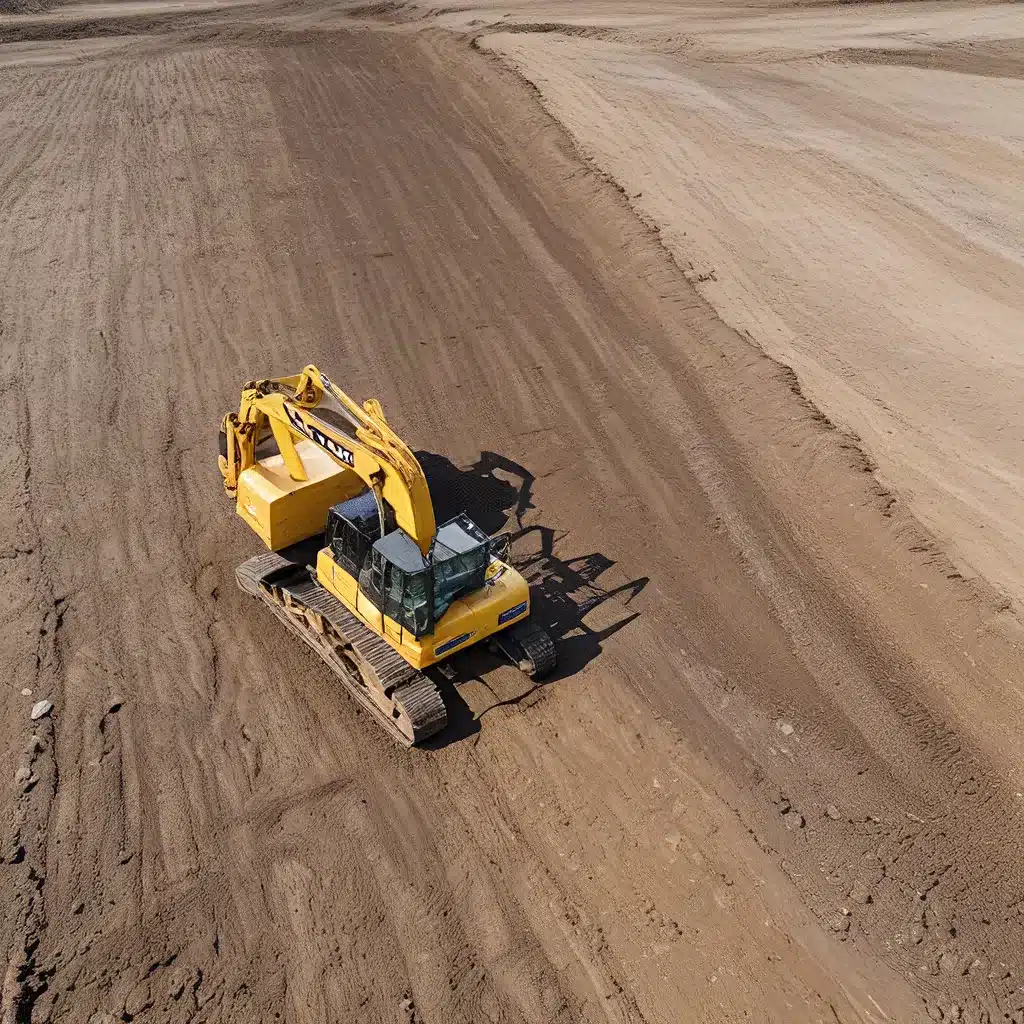
Ah, the soil beneath our feet – it’s the unsung hero of our daily lives, isn’t it? But what happens when this vital resource becomes tainted by the byproducts of human activity? Well, my friends, that’s where the real magic happens. In this article, we’re going to dive headfirst into the world of soil remediation, exploring the cutting-edge advancements that are quite literally transforming contaminated wastelands into thriving, sustainable oases.
Uncovering the Dirty Truth: The Challenges of Soil Contamination
Let’s be honest, soil pollution is no laughing matter. Whether it’s from oil spills, industrial accidents, or even legacy contamination, these unseen toxins can wreak havoc on the environment and pose serious threats to human health. I mean, just imagine a playground where the sand is laced with heavy metals – yikes! That’s why the team at Inland Waters Inc. has made it their mission to tackle this problem head-on.
As someone who’s spent more time than I’d like to admit knee-deep in mud and grime, I can attest to the sheer complexity of soil remediation. It’s not as simple as just scooping up the bad stuff and calling it a day. Oh no, my friends, this is a delicate dance of science, technology, and good old-fashioned elbow grease.
Pioneering Precision: The Rise of Targeted Soil Remediation
In the not-so-distant past, the approach to soil remediation was a bit like using a sledgehammer to crack a nut. The whole site would get a thorough scrubbing, regardless of whether it was truly necessary. But thanks to advancements in digital twin technology and sensor-driven monitoring, we can now pinpoint the exact areas that need attention, leaving the rest of the site untouched.
Imagine a contaminated site as a vast, interconnected puzzle – with each piece representing a unique set of challenges. By creating a virtual replica of the physical location, we can simulate and model different remediation scenarios, ensuring that our approach is as precise and efficient as possible. And with the help of cutting-edge sensors, we can track the progress of our efforts in real-time, making adjustments on the fly to optimize the clean-up.
Unleashing the Power of Nature: Bioremediation and Beyond
But wait, there’s more! As if precision-targeted remediation wasn’t enough, we’re also seeing a surge in the use of nature-based solutions to tackle soil contamination. Enter the realm of bioremediation – where we harness the power of microorganisms and plants to do the heavy lifting for us.
Imagine a team of microscopic superheroes, each with the ability to break down specific pollutants. By carefully selecting and cultivating these microbial marvels, we can create a targeted clean-up crew that gets to work on the contaminants, leaving the surrounding soil unharmed. And the best part? These little guys are renewable, self-sustaining, and oh-so-eco-friendly.
But the magic doesn’t stop there. Phytoremediation, the use of specialized plants to absorb and accumulate contaminants, is another game-changer in the world of soil reclamation. Just picture a field of hyperaccumulator plants, stretching their green tendrils towards the sky and literally pulling the toxins out of the ground. It’s like a superhero comic come to life, and it’s happening right before our eyes.
Bridging the Gap: Integrating Sustainability and Community Engagement
Now, you might be thinking, “That’s all well and good, but what about the human element?” Well, my friends, that’s where the true innovation lies. At Inland Waters Inc., we believe that soil remediation isn’t just about the science and technology – it’s also about the people.
We’ve seen firsthand how involving local communities in the cleanup process can make a world of difference. By opening up the lines of communication and incorporating their needs and concerns into our plans, we can ensure that the end result not only addresses the environmental issues but also serves the greater good of the people who call that area home.
And when it comes to sustainability, we’re not just talking about the end result – we’re committed to the entire journey. From using renewable energy sources to minimizing our environmental footprint, we’re constantly exploring new ways to make our remediation efforts as eco-friendly as possible. After all, what’s the point of cleaning up one mess if we’re just going to create another?
Embracing the Future: Innovative Approaches to Soil Reclamation
As exciting as all of this sounds, the truth is, we’re just scratching the surface of what’s possible in the world of soil remediation. With the rapid pace of technological advancement, who knows what wonders the future might hold?
Maybe we’ll see the widespread adoption of revolutionary electrokinetic techniques, where we use electrical currents to draw contaminants out of the soil. Or perhaps the rise of nano-engineered solutions, where microscopic particles hunt down and neutralize toxic compounds. The possibilities are endless, and the team at Inland Waters Inc. is eager to explore them all.
But one thing is for certain: the future of soil remediation is bright, innovative, and above all, sustainable. So, the next time you set foot on a freshly reclaimed plot of land, remember the incredible journey it took to get there – from the cutting-edge science to the community-driven initiatives. It’s a testament to the power of human ingenuity, and a shining example of how we can work together to heal the planet, one soil sample at a time.


